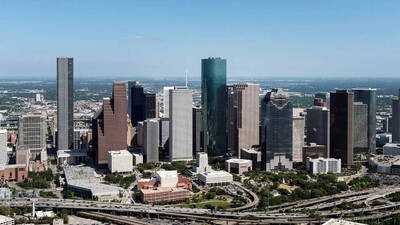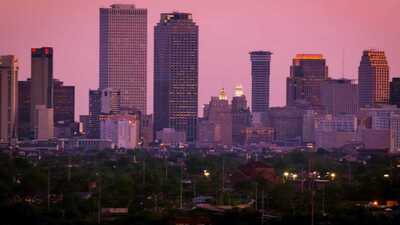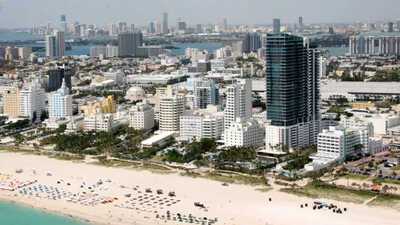Global warming and climate change are accelerating the rise of sea levels worldwide. Low-lying coastal cities are already witnessing devastating floods, forcing governments to devise costly and creative solutions to protect their residents. While some urban areas are sinking due to land subsidence from excessive groundwater pumping, others are battling the encroaching tides of rising seas. According to the World Economic Forum, many of the world’s most iconic cities, from Jakarta to Miami, could face partial or total submersion by the end of this century, highlighting the urgent need for climate action and sustainable urban planning.
11 sinking cities most at risk of disappearing
1. Jakarta, Indonesia

Jakarta is sinking at an alarming rate of up to 6.7 inches per year, mainly due to excessive groundwater pumping. As pressure changes underground, the land collapses, making flooding worse.
The Indonesian government has even approved a $33 billion plan to move the capital city 100 miles away from its current location on Java Island. Without drastic measures, much of Jakarta could be underwater by 2050.
2. Lagos, Nigeria

Africa’s largest city sits on a vulnerable coastline that is already eroding. Rising seas caused by climate change are putting Lagos at serious risk of flooding.
A University of Plymouth study (2012) found that a sea level rise of three to nine feet would have a catastrophic effect on Lagos. With global sea levels expected to rise 6.6 feet by 2100, the threat is imminent.
3. Houston, Texas, USA

Parts of Houston are sinking by about 2 inches per year, largely because of groundwater extraction. This subsidence makes the city more vulnerable to extreme weather events.
The devastating Hurricane Harvey (2017) damaged 135,000 homes and displaced 30,000 residents, highlighting how rising seas and sinking land amplify natural disasters.
4. Dhaka, Bangladesh

Bangladesh contributes only 0.3% of global emissions, yet it faces some of the harshest consequences of climate change. Rising seas could flood 17% of Bangladesh’s land by 2050, displacing an estimated 18 million people. Dhaka, one of the most densely populated cities on Earth, sits at the heart of this crisis.
5. Venice, Italy

Known as the “floating city,” Venice is itself sinking at 0.08 inches per year. The Italian government began constructing the MOSE flood barrier in 2003, a $6.5 billion project meant to protect Venice from floods.
However, delays meant it was still incomplete when severe storms hit in 2018, causing the worst flooding in a decade. Without reliable flood defences, Venice remains highly vulnerable.
6. Virginia Beach, Virginia, USA

Virginia Beach faces one of the fastest rates of sea-level rise on the US East Coast, caused by both rising seas and sinking land. The NOAA estimates that the city could see nearly 12 feet of sea level rise by 2100, a potentially devastating scenario for residents and infrastructure.
7. Bangkok, Thailand

Bangkok is sinking at a rate of more than 1 cm per year, putting it at risk of being below sea level by 2030.
In response, the city has invested in innovative infrastructure, including the Chulalongkorn University Centenary Park, an 11-acre green space capable of holding 1 million gallons of rainwater to mitigate seasonal flooding.
8. New Orleans, Louisiana, USA

New Orleans is sinking by about 2 inches per year, and some parts of the city are already 15 feet below sea level. Its location on a river delta makes it highly vulnerable to rising waters.
A 2016 NASA study warned that the city could be underwater by 2100. Hurricane Katrina (2005) already demonstrated the catastrophic potential of flooding in this region.
9. Rotterdam, The Netherlands

With 90% of Rotterdam below sea level, the Dutch city is at constant risk of flooding. Rising seas increase the urgency of flood management. Instead of relying only on dikes, the Netherlands is adopting innovative measures like the Room for the River project, which creates flood plains and builds storm surge barriers to absorb excess water.
10. Alexandria, Egypt

The Mediterranean port city of Alexandria is losing its beaches as sea levels rise. By 2100, the Mediterranean Sea could rise by two feet, according to NPR, threatening the city’s historic landmarks and residential areas.
Millions living along Egypt’s coast could be displaced if protective measures fail.
11. Miami, Florida, USA

Often described as the “poster child” of climate risk, Miami is experiencing sea-level rise at faster rates than the global average. The city faces frequent flooding, contaminated drinking water, and mounting infrastructure damage. Environmental author Jeff Goodell warns that “there’s virtually no scenario” in which Miami survives intact by the end of the century.
11 sinking cities most at risk of disappearing
1. Jakarta, Indonesia

Jakarta is sinking at an alarming rate of up to 6.7 inches per year, mainly due to excessive groundwater pumping. As pressure changes underground, the land collapses, making flooding worse.
The Indonesian government has even approved a $33 billion plan to move the capital city 100 miles away from its current location on Java Island. Without drastic measures, much of Jakarta could be underwater by 2050.
2. Lagos, Nigeria

Africa’s largest city sits on a vulnerable coastline that is already eroding. Rising seas caused by climate change are putting Lagos at serious risk of flooding.
A University of Plymouth study (2012) found that a sea level rise of three to nine feet would have a catastrophic effect on Lagos. With global sea levels expected to rise 6.6 feet by 2100, the threat is imminent.
3. Houston, Texas, USA
Parts of Houston are sinking by about 2 inches per year, largely because of groundwater extraction. This subsidence makes the city more vulnerable to extreme weather events.
The devastating Hurricane Harvey (2017) damaged 135,000 homes and displaced 30,000 residents, highlighting how rising seas and sinking land amplify natural disasters.
4. Dhaka, Bangladesh
Bangladesh contributes only 0.3% of global emissions, yet it faces some of the harshest consequences of climate change. Rising seas could flood 17% of Bangladesh’s land by 2050, displacing an estimated 18 million people. Dhaka, one of the most densely populated cities on Earth, sits at the heart of this crisis.
5. Venice, Italy

Known as the “floating city,” Venice is itself sinking at 0.08 inches per year. The Italian government began constructing the MOSE flood barrier in 2003, a $6.5 billion project meant to protect Venice from floods.
However, delays meant it was still incomplete when severe storms hit in 2018, causing the worst flooding in a decade. Without reliable flood defences, Venice remains highly vulnerable.
6. Virginia Beach, Virginia, USA

Virginia Beach faces one of the fastest rates of sea-level rise on the US East Coast, caused by both rising seas and sinking land. The NOAA estimates that the city could see nearly 12 feet of sea level rise by 2100, a potentially devastating scenario for residents and infrastructure.
7. Bangkok, Thailand
Bangkok is sinking at a rate of more than 1 cm per year, putting it at risk of being below sea level by 2030.
In response, the city has invested in innovative infrastructure, including the Chulalongkorn University Centenary Park, an 11-acre green space capable of holding 1 million gallons of rainwater to mitigate seasonal flooding.
8. New Orleans, Louisiana, USA
New Orleans is sinking by about 2 inches per year, and some parts of the city are already 15 feet below sea level. Its location on a river delta makes it highly vulnerable to rising waters.
A 2016 NASA study warned that the city could be underwater by 2100. Hurricane Katrina (2005) already demonstrated the catastrophic potential of flooding in this region.
9. Rotterdam, The Netherlands

With 90% of Rotterdam below sea level, the Dutch city is at constant risk of flooding. Rising seas increase the urgency of flood management. Instead of relying only on dikes, the Netherlands is adopting innovative measures like the Room for the River project, which creates flood plains and builds storm surge barriers to absorb excess water.
10. Alexandria, Egypt
The Mediterranean port city of Alexandria is losing its beaches as sea levels rise. By 2100, the Mediterranean Sea could rise by two feet, according to NPR, threatening the city’s historic landmarks and residential areas.
Millions living along Egypt’s coast could be displaced if protective measures fail.
11. Miami, Florida, USA
Often described as the “poster child” of climate risk, Miami is experiencing sea-level rise at faster rates than the global average. The city faces frequent flooding, contaminated drinking water, and mounting infrastructure damage. Environmental author Jeff Goodell warns that “there’s virtually no scenario” in which Miami survives intact by the end of the century.
You may also like

Man Utd finally agree Alejandro Garnacho exit as Chelsea strike £40m transfer deal

Mumbai News: Matunga Police Transfer ₹76 Crore Corporate Fraud Case To EOW For Probe

Man could have murder sentence reduced 'if she provoked him by refusing sex'

Molly-Mae Hague bags front row theatre seats – despite paying for very different ones

Punjab CM Bhagwant Mann, AAP MLAs To Donate One Month's Salary For Flood Relief






